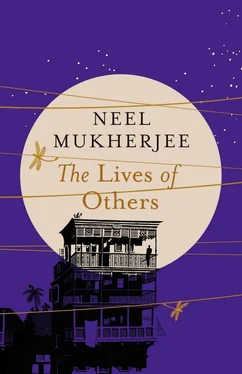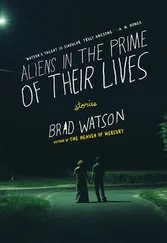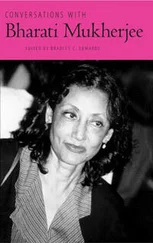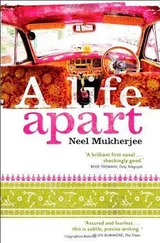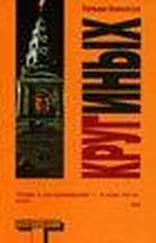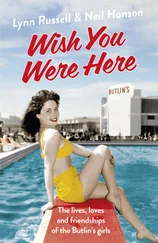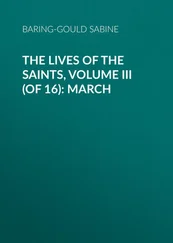‘There, caught you, where will you escape now, eh?’ Mad Ashu says again, but the threatening tone is so exaggerated that it seems to be a broad-brushstroke performance aimed at gullible children. Before Sona can compose a suitable reply Mad Ashu says, ‘Can you tell me which prime numbers can be expressed as the sum of two squares?’
Something opens up in the boy. The sound of rickshaw horns and the ‘ting’ of the tram bell that punctuates its groaning trundle as it makes its way up Russa Road and the sound of water from a burst standpipe and of evening puja from a house nearby all disappear in an instant, as if all this were happening in a dream. At discrete moments in his future Sona will invariably picture this instant as a differentiable point in a smooth curve, the point, that exact point, where the tangent grazes it; it is that one point of contact that will, in a long concatenation of events, change his entire life. The origin of it is this moment when Mad Ashu asks him a question about prime numbers.
When the sound floods back, Sona hears himself answer, ‘All primes above 2 that leave the remainder 1 when divided by 4. So 4n + 1.’ He has known this from the age of seven: that all primes above 2 are odd; that they consequently fall into two categories — those that leave the remainder 1 when divided by 4, and those that leave the remainder 3; that only (4n + 1) primes can be expressed as the sum of two squares, not the (4n + 3) numbers. This had emerged as a branch-line while he was pursuing, at the age of six, a way of determining which numbers between 1 and 1,000 were primes. He wrote them down on pages and pages, then began to strike off 2 and every second number after 2, since they were all divisible by 2. Then he put a line through 3 and deleted every third number after 3. Then 5 and every fifth number after 5. And so on until all the remaining numbers were indubitably primes. He has favourites among them: 37 is one; 3 + 7 gives 10, 1 + 0 gives 1, which is yet another favourite number. (And also interesting ; he has read the story of G.H. Hardy telling Ramanujan how 1,729, the number of the taxi in which he arrived to visit the ailing Indian genius, was a rather dull one, whereupon Ramanujan instantly replied that, on the contrary, it was very interesting for it was the smallest number that could be expressed as the sum of two cubes in two different ways: 1,729 = 1 3+ 12 3= 9 3+ 10 3. To which Sona found added glamour in the fact that the sum of all its numerals yielded 1, his favourite number.) These numbers come to him clothed in a beauty that surpasses everything in his dim, crumpled, shabby life. They are luminous, they speak to him in a way that gives him something precious, protected from the rest of his hours and days. They belong to a world that consists only of him and the numbers, nothing else, a world of absolute and utter perfection that cannot be expressed, and therefore debased already, by words.
The effect of his answer is equally unprecedented. Mad Ashu gives out a high, hiccuping giggle, poised somewhere between the gurgling of a baby, giddy with laughter, and a series of barks emitted by an imaginary animal. The lenses of industrial thickness flash, or are they his eyes?
‘Bah, bah, grand! Grand. Now, can you prove it?’ the madman asks.
Sona shakes his head. ‘No, I’ve been trying, but I keep running into walls.’
‘The proof is not easy. Do you know the Brahmagupta identity?’
Sona shakes his head again, but this time there is excitement and curiosity mixed with the admission of failure. He has got over the slurring way of talking that Mad Ashu has, as if his sleepy tongue is having trouble waking up to alertness.
‘Proof is everything in mathematics. You know that, right?’ Mad Ashu asks and peers at him as he would at an insect in his food.
Sona nods his assent.
‘Listen, you come with me, I’ll show you, show you the proof. I live right here, look, there’s my house,’ he says, pointing, and at that exact moment there is a power outage. A collective sigh from the whole neighbourhood goes up.
‘Jaaaah, load-shedding. Load-shedding, do you see? Again,’ the man says. ‘But no problem, we’ll work in the light of a hurricane lamp, we’ll ask them to send one to the room. Come, come.’
Any other time this business of following a stranger, and not quite a normal stranger, home would have given Sona pause, not least by the promptings of his own shyness and solitary, reserved nature. But the lure of numbers has overruled everything; Sona is not even conscious of any such caution or deliberation. Maybe the bits of half-truths about Ashish Roy, those not to do with his apparent unordinariness, submerged under the more colourful gossip of insanity, played a part in this. Sona seems to remember, in shreds and patches, that Ashish Roy had been a much-respected professor in Presidency College; people used to call him interchangeably ‘genius’ and ‘mad’; the terms, after all, could very well be transferable. Then something had happened — an illness, a stroke, an accident, a grieving? — something that Sona does not know, never knew; Ashish Roy had stopped being a regular commuter across the divide between ‘genius’ and ‘madman’ and had remained stuck on one side, unable to cross over to the other again. He had taken early retirement and was often seen walking along the streets of Patuapara or just north of Hazra Road with rheumy eyes, muttering to himself, sometimes laughing out loud, sometimes sighing, dressed in outsized, filthy hand-me-downs, a handy bugbear for mothers of the area to scare their children with. And yet, through all this open ridiculing, something of the awe at his former glory, something remembered, perhaps only through anecdotes at several removes, bubbles to the surface and mitigates what could easily have turned into naked cruelty.
Sona follows Ashish Roy to his dingy quarters on the ground floor of a decrepit house on Rupchand Mukherjee Lane. The falling dark and the power outage have not been dented in the slightest by the few hurricane lamps that are being lit; most of their glass chimneys are black with soot. A transistor radio is playing, in a room somewhere, a popular Hemanta Mukherjee song. An elderly woman’s voice calls out, ‘Who goes there?’ No one replies. Ashish Roy mutters, ‘So dark, can’t see a thing, wait, don’t move, you may trip over something’, then gives a shout, ‘Orre, bring some light here’, which tapers to a thin cry towards the end of the call. No answer.
‘Follow me, we’ll get there,’ he advises the boy, then begins his ill man’s shuffle. Sona cannot see him very well, but does as he is told. A servant is complaining in shrill tones, ‘The water’s gone. If the pump had been turned on this afternoon, there would be water. How will I do the washing-up now?’ There follows the clatter of stainless-steel plates and metal pots and pans.
When they reach what Sona assumes to be Ashish Roy’s room, he notices that a hurricane lamp has been placed already on a wooden stool. It casts more shadows than it illuminates. The extreme shabbiness of the room is familiar to Sona — a wooden four-poster bed with greasy sheets and pillows, a large glass-fronted showcase containing scores of books, a wooden almirah, a cane stool, a diptych of framed photographs of perhaps his dead parents above the doorframe, a wall calendar from ‘Basak Stores’ with a picture of Kali.
The man plunges in straight away. ‘Proof, proof, no proof, nothing. Have you heard of Euclid? The Greeks laid the foundations of mathematics. Can you tell me how many prime numbers there are? Can you tell me?’
Sona knows this. ‘Infinite,’ he answers.
Ashish Roy cackles again, ‘Correct, correct. Now, can you prove it? See here, see here.’
Читать дальше
